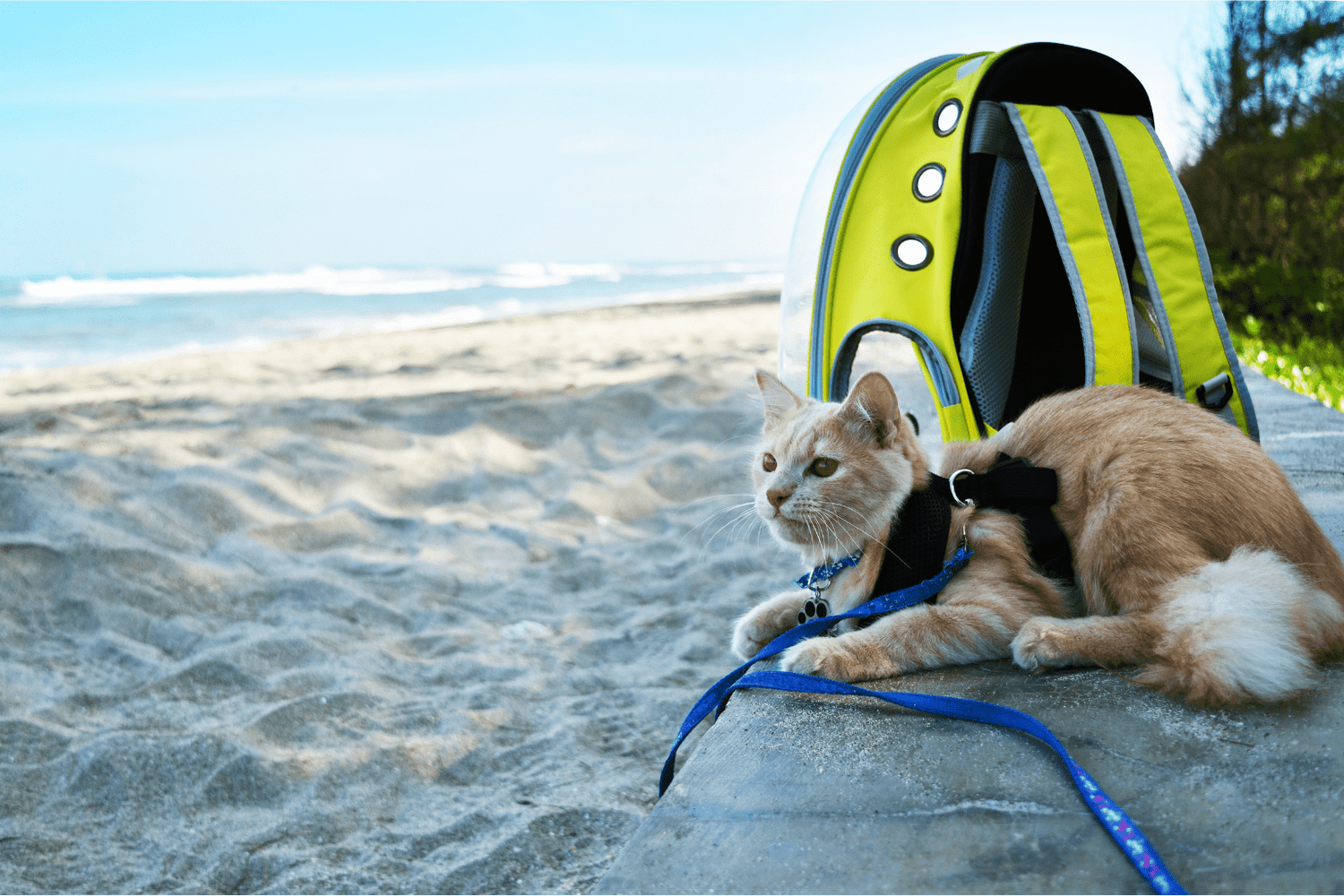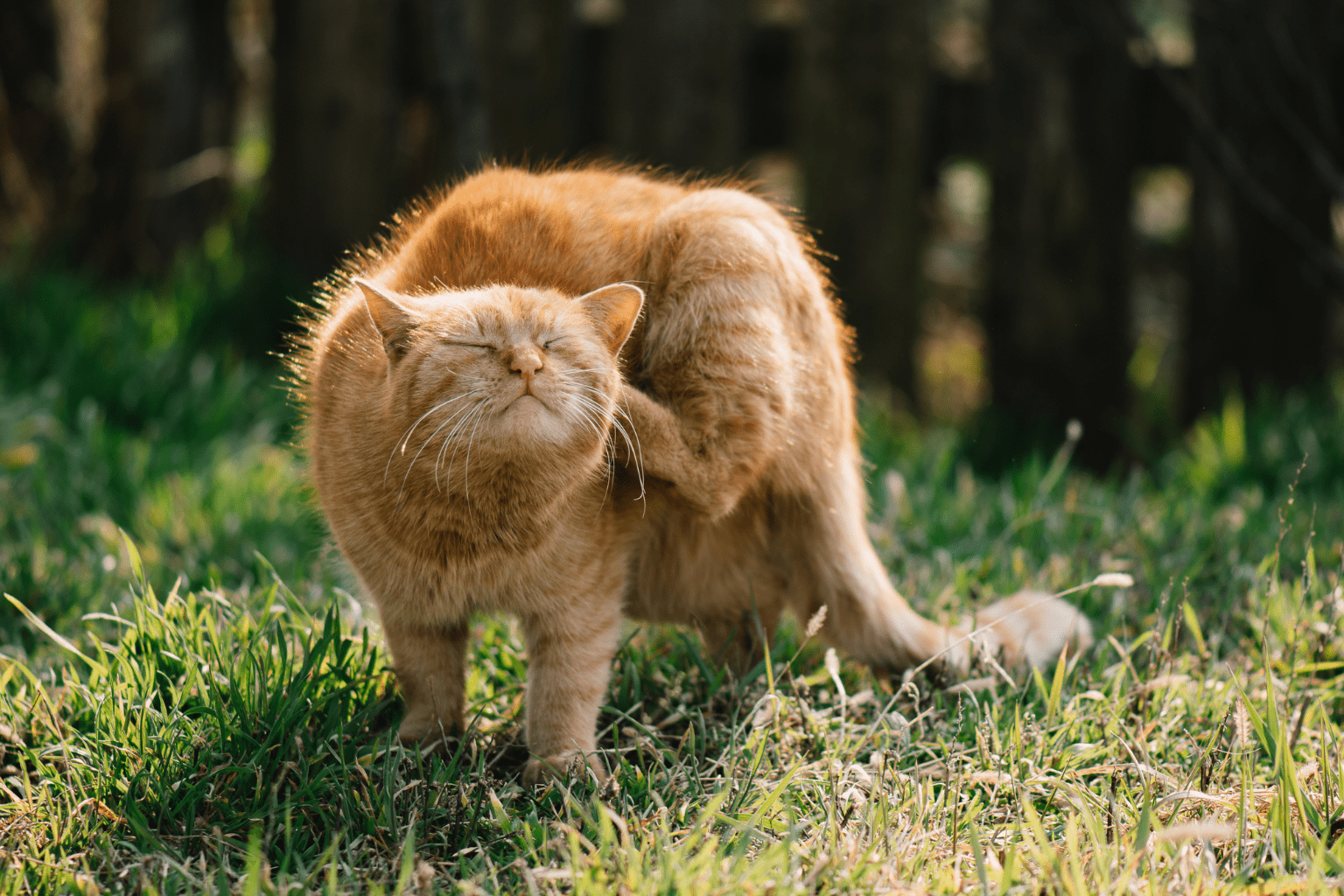Key Takeaways
- Traveling with cats requires careful planning to ensure their comfort and safety.
- Cats are generally less accustomed to travel compared to dogs, but many pet parents successfully take their cats on trips.
- Trips with cats can range from short weekend getaways to long-distance moves.
- Understanding your cat's unique needs is essential for a calm and joyful travel experience.
Table of Contents
- Is Traveling Right for Your Cat? Deciding With Compassion and Know-How
- Cat Travel Prep 101: The Check-List Every Pet Parent Needs Before You Go
- Choosing the Right Carrier: Comfort, Security, and Airline Rules
- Step-by-Step: Training Your Cat to Love Travel
- On the Road or in the Air: Practical Travel Logistics for Every Feline Family
- Managing Cat Anxiety, Motion Sickness, and Health Safely
- Packing and Using Essentials: From Litter to Treats
- Cat-Proofing Your Destination: Temporary Safe Spaces in Hotels and Rentals
- Troubleshooting & On-the-Go Emergencies: Real Solutions to Real-World Problems
- Feline Wellness on the Move: Supporting Your Cat's Natural Health Before, During, and After Travel
- Community Stories: From Rescue Heroes to Globe-Trotting Housecats
Cats and Traveling: The Complete Pet Parent's Guide to Calm, Safe, and Joyful Journeys
Planning a trip with your feline family member? You're not alone in wondering whether cats and traveling can truly mix. While our independent kitties aren't natural road warriors like dogs, thousands of pet parents successfully adventure with their cats every year, from weekend cabin getaways to cross-country moves.
The secret isn't forcing a homebody into wanderlust, but understanding your cat's unique personality and preparing thoughtfully. With gentle training, the right gear, and natural support for travel stress, even formerly anxious cats can learn to embrace new experiences alongside their favorite humans.
For pet parents who want to support their cat's immune system during travel, Cat Allergy Relief & Immune Support can be a helpful addition to your travel kit.
Is Traveling Right for Your Cat? Deciding With Compassion and Know-How
Not every cat is cut out for adventure, and that's perfectly okay. Social, curious cats who already enjoy car rides or explore new spaces confidently tend to adapt well to travel. These natural adventurers often show interest in carrier training and remain calm during short practice trips.
On the flip side, cats who hide during thunderstorms, refuse to leave one room, or show severe stress during vet visits may find travel overwhelming. Research shows that chronic stress in cats manifests through hiding for extended periods, refusing food for more than 24 hours, or excessive vocalization, clear signals that a cat on vacation might not be the right choice.
The good news? Temperament matters far more than breed. A confident rescue tabby often travels better than an anxious purebred. Start with a simple "dry run", place your cat's carrier in the living room with the door open, add their favorite blanket, and observe their reaction over 3-7 days. Curious cats will investigate; travel-ready cats will nap inside.
Cat Travel Prep 101: The Check-List Every Pet Parent Needs Before You Go

Successful cats and traveling stories start with meticulous preparation. Your feline travel kit should include a sturdy carrier, familiar bedding (that shirt you wore yesterday works perfectly), collapsible food and water bowls, enough regular food for the entire trip plus two extra days, and a portable litter box with familiar litter.
Don't forget the paperwork trail. Schedule a vet visit 2-3 weeks before departure to ensure vaccinations are current, discuss any health concerns, and obtain a health certificate if crossing state lines. Update your cat's microchip information with your travel contact details, this simple step has reunited countless families with lost pets.
Smart pet parents also pack a "comfort kit": your cat's favorite toy, a piece of clothing that smells like home, and any natural remedies your vet has recommended for travel stress. Bailey's mom learned this lesson when her typically calm tabby refused to eat during their first hotel stay, until she unpacked his favorite catnip mouse.
Choosing the Right Carrier: Comfort, Security, and Airline Rules
Your carrier choice can make or break your travel experience. The golden rule: your cat must be able to stand fully, turn around, and lie down comfortably. For most average-sized cats, this means carriers measuring at least 18" long by 11" wide by 11" high.
| Carrier Type | Best For | Key Features | Travel Mode |
|---|---|---|---|
| Hard-sided | Air travel, anxious cats | Maximum security, easy cleaning | Planes, long car trips |
| Soft-sided | Car travel, flexible spaces | Lightweight, fits under airline seats | Cars, trains, some airlines |
| Backpack style | Short trips, small cats | Hands-free, bubble windows | Walking, brief outings |
Make the carrier feel like home before you travel. Place your worn t-shirt inside, feed treats near the open door, and let your cat explore it freely for at least a week. The goal is transforming the carrier from "vet visit doom" to "cozy den." Secure it in your car with a seatbelt, even the most escape-proof carrier isn't infallible if it becomes a projectile during sudden stops.
Step-by-Step: Training Your Cat to Love Travel
Carrier training follows a gentle timeline that respects your cat's pace. Start with 10-minute daily sessions: place treats inside the carrier, play with toys nearby, and let curiosity work its magic. Never force your cat inside, patience wins over pressure every time.
Once your cat willingly enters the carrier for treats (usually within 3-5 days), begin short car trips. Start with just turning on the engine while parked, then progress to 2-minute drives around the block. Luna, a formerly skeptical tabby, graduated from "carrier hater" to "happy passenger" in just two weeks using this gradual approach.
For cats who'll be exploring destinations, leash training adds an extra layer of safety. Use a properly fitted harness and start indoors, allowing your cat to wear it for short periods daily. Once comfortable indoors, practice in a secure outdoor space like a fenced yard or quiet patio. Remember, not all cats will take to leash walking, and that's perfectly okay, it's just one tool in your travel toolkit.
On the Road or in the Air: Practical Travel Logistics for Every Feline Family

Whether you're planning a cross-country road trip or flying to visit family, each mode of transport brings unique considerations for cats and traveling. Understanding these logistics ahead of time transforms potentially stressful journeys into manageable adventures.
For car travel, secure your cat's carrier with a seat belt in the back seat, never in the front where airbags could cause injury. Maintain a comfortable temperature between 65-75°F, and plan breaks every 2-3 hours to check on your kitty and offer water. During stops, never leave your cat unattended in the vehicle, even with windows cracked.
Air travel requires more preparation but opens up distant destinations. Most airlines allow cats in the cabin if the carrier fits under the seat (typically 18" x 11" x 11" maximum). You'll need a health certificate from your vet within 10 days of travel, current vaccination records, and be prepared for security screenings where you'll carry your cat through the metal detector while their carrier goes through the X-ray machine.
| Travel Mode | Best For | Key Requirements | Typical Duration Limit |
|---|---|---|---|
| Car | Flexible schedules, multiple stops | Secured carrier, temperature control | 8-10 hours with breaks |
| Air (Cabin) | Long distances, time-sensitive trips | Health certificate, airline-approved carrier | 5-6 hours including airport time |
| Train | Scenic routes, less stressful than flying | Pet ticket, leash for station walks | Varies by route |
For more tips on keeping your cat comfortable during travel, see our guide on cats and litter boxes for advice on litter solutions on the go.
Managing Cat Anxiety, Motion Sickness, and Health Safely
Even well-prepared cats can experience travel anxiety or motion sickness. Recognizing the signs early, panting, excessive drooling, vomiting, or hiding, helps you respond with compassion and appropriate support.
Create a "calm bubble" for your anxious traveler by draping a light blanket over part of their carrier, playing soft classical music, and speaking in soothing tones. Some cats benefit from wearing a shirt that smells like you, placed in their carrier as a comfort item. If your cat shows severe stress signs like refusing to eat for more than 24 hours or excessive vocalization, consult your veterinarian about whether continuing the trip is in their best interest.
Motion sickness typically appears as drooling, restlessness, or vomiting during or shortly after travel. Position the carrier so your cat faces forward in vehicles, ensure good ventilation, and avoid feeding large meals 3-4 hours before departure. For cats prone to travel upset, Pet Relax Cat Calming Anxiety Relief can help support their body's natural ability to cope with motion and stress, though this should complement, never replace, veterinary guidance when needed.
When to Call the Vet: Contact your veterinarian immediately if your cat shows signs of severe distress like difficulty breathing, continuous vomiting for more than 2 hours, or complete refusal to drink water for 12+ hours during travel.
Packing and Using Essentials: From Litter to Treats
Smart packing prevents mid-trip surprises and keeps your cat comfortable throughout your journey. The key is bringing familiar items while choosing travel-friendly versions of daily necessities.
For litter solutions, collapsible boxes work well for hotel stays, while disposable cardboard options excel for shorter trips. Pack 1.5 times the litter you think you'll need, travel stress often increases bathroom frequency. Bring your cat's regular food in sealed containers, plus an extra day's worth in case of delays. A familiar water bowl encourages hydration, which many cats reduce during travel stress.
Prepare for accidents with enzyme-based cleaning wipes, disposable pee pads, and a small handheld vacuum or lint roller for carrier cleanup. Pack any remedies or supplements in easily accessible containers, stressed cats benefit most from consistent wellness routines, even away from home. A small cooler keeps wet food fresh and provides easy access to water during longer journeys.
For cats with chronic conditions requiring regular support, consider how to maintain their routine discreetly. Small remedy containers fit easily in travel bags, and maintaining familiar dosing schedules helps cats feel secure even in new environments. Remember: any health support should complement your veterinarian's travel recommendations.
Cat-Proofing Your Destination: Temporary Safe Spaces in Hotels and Rentals

Arriving at your destination marks the beginning of a new adventure, but your cat needs time to decompress and explore safely. Creating an immediate "base camp" helps them transition from travel stress to vacation enjoyment.
Upon arrival, set up one room as your cat's headquarters before exploring the full space. Place their litter box in a quiet corner, position food and water away from the litter area, and lay out their familiar blanket or bed. Check for hazards like gaps behind furniture, unsecured windows, or toxic plants that curious cats might investigate. Block access to any unsafe areas and ensure windows and doors are securely closed. A little preparation goes a long way in helping your cat settle in and feel at home, even in a new environment.
Troubleshooting & On-the-Go Emergencies: Real Solutions to Real-World Problems
Lost cat protocol starts with immediate action. If your cat escapes, don't chase them, this often drives them further away. Instead, place their carrier, food, and something with your scent near the escape location. Contact local animal control, nearby veterinary clinics, and post on social media with a clear photo. Check your cat's microchip registration to ensure your current contact information is listed.
For in-transit accidents and illness, stay calm and assess the situation. If your cat vomits in the carrier, pull over safely and clean them gently with pet wipes. Offer small sips of water after 30 minutes, but don't force eating until they seem settled. For diarrhea or continued vomiting, contact the nearest veterinary clinic for guidance. Keep a list of emergency vet contacts along your route.
Sometimes the kindest decision is postponing travel. If your cat shows severe stress signs, refusing to eat for over 24 hours, excessive panting, or complete withdrawal, consider whether the trip is truly necessary. Senior cats or those with chronic health conditions may need extra recovery time between travel days.
Emergency kit essentials: Your vet's contact information, current photos of your cat, backup collar and ID tag, basic first aid supplies, and a list of 24-hour veterinary clinics along your route.
For more information on travel safety, see these travel safety tips for pets from the ASPCA.
Feline Wellness on the Move: Supporting Your Cat's Natural Health Before, During, and After Travel
Holistic preparation helps your cat's body adapt to travel stress naturally. Cats and traveling create unique challenges for feline wellness, but Pet Relax Cat Calming Anxiety Relief can support your cat's natural resilience without harsh side effects. Consider starting wellness support a few days before departure to help your cat's system prepare for the journey ahead.
Maintaining digestive health during travel requires attention to familiar routines. Stick to your cat's regular feeding schedule as closely as possible, and bring enough of their usual food for the entire trip plus extra days. Hydration becomes even more critical during travel stress, offer fresh water frequently and consider bringing water from home if your cat is particularly sensitive to taste changes.
Post-travel recovery varies by cat, but most need 24-48 hours to fully readjust. Signs of healthy adaptation include normal eating, regular litter box use, and gradual return to playful behavior. Some cats may hide initially upon returning home, this is normal. Provide extra comfort through familiar routines, gentle play sessions, and their favorite resting spots.
Bailey, a rescue tabby, exemplifies successful travel wellness support. After using gentle daily remedies starting three days before a cross-country move, Bailey maintained his appetite throughout the journey and was back to his playful self within a day of arrival.
Not a substitute for professional veterinary advice.
For more on respiratory health while traveling, read our article on can cats get a cold or respiratory infection.
For additional guidance on traveling with pets, the AVMA offers helpful advice on traveling with pets.
Community Stories: From Rescue Heroes to Globe-Trotting Housecats

Wellness Wendy discovered that her label-reading habits served her well during weekend cabin trips. "I packed Luna's usual organic food, but also brought natural calming support just in case," she shares. "The three-hour drive went smoothly, and Luna spent the weekend confidently exploring the screened porch."
Golden-Years Gary made his senior Lab's final vacation memorable by including their elderly tabby, Smokey. "At 14, we thought Smokey was too old to travel, but gentle preparation and the right carrier made all the difference. Smokey actually seemed to enjoy watching the world go by from his secure spot."
Rescue Rachel's multi-cat transport challenged every travel rule. Moving five rescue cats across two states required military-style planning. "Individual carriers, staggered feeding times, and natural wellness support for the anxious ones. The key was treating each cat as an individual with unique needs."
Feline Fiona's chronically ill kitty, Patches, proved that even special-needs cats can travel successfully. "Stealth dosing her daily wellness pellets in a small treat made medication management seamless, even in unfamiliar hotel rooms."
Frequently Asked Questions
How can I determine if my cat is suited for traveling and what signs indicate they might not handle travel well?
Observe your cat's behavior in new situations, curious, social cats who tolerate car rides and carrier time usually adapt better to travel. Signs your cat might struggle include hiding for long periods, refusing food for over 24 hours, or vocalizing excessively when stressed.
What are the essential items and preparations needed to ensure a comfortable and safe trip for my cat?
Prepare a secure, comfortable carrier, familiar bedding or toys, and a portable litter box. Bring your cat’s regular food, water, and natural supplements like Cat Allergy Relief & Immune Support to help ease travel stress and support wellness.
How can I train my cat to feel more comfortable with their carrier and the overall travel experience?
Start by leaving the carrier out with the door open, adding familiar scents and treats to encourage exploration. Gradually increase time spent inside, then practice short car rides to build positive associations and reduce anxiety.
What strategies can help manage my cat's anxiety, motion sickness, or health issues during travel?
Maintain a calm environment with gentle reassurance and familiar items. Use natural remedies designed to support your cat’s own healing and immune system, and plan frequent breaks for longer trips. Always consult your vet before travel for personalized advice.



